Metaframeworks in practice, Part 4: Context-space mapping and SCAN
What generic base-frameworks or base-metaframeworks do we need, to support sensemaking and decision-making across the full scope of enterprise-architectures? How do we create those frameworks in real-world practice?
This is the fourth of five worked-examples of metaframeworks in practice – on how to hack and ‘smoosh-together’ existing frameworks to create a tool that will help people make sense of a specific business-context:
- Part 1: Zachman plus tetradian -> extended-Zachman
- Part 2: TOGAF plus PDCA plus US-Army AAR -> iterative-TOGAF
- Part 3: Chinese wu xing plus Group Dynamics plus VPEC-T -> core Five Elements
- Part 4 [this post]: Jung plus swamp-metaphor plus systems-practice plus Kurtz/Cynefin plus OODA plus many-others -> context-space mapping -> SCAN
- Part 5: Business Model Canvas plus Viable System Model plus extended-Zachman plus many-others -> Enterprise Canvas; plus Five Element plus Market Cycle -> Enterprise-Canvas dynamics
In accordance with the process outlined in the ‘Metaframeworks in practice‘ overview-post, each of these worked-examples starts from a selected base-framework – in this case, a four-element frame originally developed by Carl Jung – and builds outward from there, to support the specified business-need.
[Note: This worked-example includes references to the Cynefin framework. Please note that this post does not critique Cynefin in any way. If anything – as per the previous posts in this series – what is critiqued here is me.]
Context-space mapping and SCAN
Business-need
As in the previous worked-example (Five Elements), there was no specific business-client for this one: it’s more that it’s been an ongoing development over many years, and continuously applied and refined in real-world practice.
The generic business-need is for some kind of framework that enables rapid yet in-depth sensemaking within confusing or seemingly-chaotic contexts, in any aspect of business and at every or any level. The ‘holy grail’ for this is a framework that is consistent across every space, and yet versatile enough to cover all context-specific sensemaking-needs. (Kind of like Chris Lockhart’s intentionally-absurd notion of the SUFFE™ – the supposed ‘Single Unified Framework For Everything’ – but without the hype and fervour. 🙂 ) In reality, I doubt we’ll ever achieve a single framework that’s anywhere close to that much-desired ‘holy grail’, but I hope this below shows that we can get to some form of metaframework that’s usable enough in practice for that purpose for many enterprise-architecture needs, and that can spawn context-specific yet still structurally-consistent frameworks as required. Even though it can be somewhat harder for more literal-minded folk to grasp, the ‘meta’-level definitely shows its mettle here, and definitely matters, too.
Metaframework process
Some forty years back, start with a simple two-axis-matrix frame derived from the work of Carl Jung:
- axis: ‘truth‘ (logic/analysis) versus ‘value‘ (feeling/intuition) [‘order’ versus ‘beyond/outside-of order’]
- axis: ‘externalised‘ (shared / ‘objective’) versus ‘internalised‘ (personal / ‘subjective’)
- quadrant: ‘outer truth‘ (externalised/analysis) [‘objective truth’]
- quadrant: ‘outer value‘ (externalised/feeling) [‘practical usefulness’]
- quadrant: ‘inner truth‘ (internalised/analysis) [paradigm/worldview]
- quadrant: ‘inner value‘ (internalised/feeling) [intuition, ‘gut-feel’]
Or, in more visual form:
Around a decade later, by serendipity, a friend sends me a copy of a book with the unpronounceable title of SSOTBME, on the often-bizarre concepts of ‘chaos-magic‘. The core framework for the book is, in effect, a rework of the same Jungian frame. As the author explains:
In SSOTBME I suggested that the surest way to map out human culture was by using a compass with four directions: Art, Science, Religion and Magic. I suggested that to ignore or deny Magic was a bit like denying the existence of a hole in the road – it simply increased the chance of falling into it.
The crucial distinction here is that these are not quadrants in a two-axis, but ‘ways of seeing‘ within a total space (‘human culture’, though described in the book in terms of ‘a swamp of infinite-possibility’). To me, the concept of ‘ways of seeing’ made sense in terms of my art-college/design background, though the ‘chaos-magic’ connection remained problematic – especially in trying to explain it to anyone else!
Another serendipitous connection: Arthur C Clarke’s oft-quoted aphorism:
Any sufficiently advanced technology is indistinguishable from magic.
However, the systems-principle of reciprocation or balance suggests that the inverse could also apply:
Any sufficiently advanced magic is indistinguishable from technology.
Which in certain real-world contexts is literally true, such as in innovation – ‘creating an idea from nothing’ – and in some aspects of medicine such as the placebo-effect – ‘creating healing from nothing’. Hence, in effect, it can be legitimate to describe ‘technology’ and ‘magic’ as near-synonyms of each other, whereas ‘science’ and ‘technology’ have fundamental differences in their respective ‘ways of seeing’ – and thus the term ‘applied science’ often a dangerously-misleading misnomer.
Anyway, that’s the frame that I later used in my 1986 book Inventing Reality: four modes for making sense of ‘the swamp’, cross-mapped to that Jungian base:
Note again that these are not labels or roles or categories, but ways of seeing – ways of interpreting or making-sense of what’s seen and experienced within ‘the swamp’. It’s also recursive: for example, someone whose preferred mode of sensemaking is as a Believer, re-interpreting everything within that mode as if it’s a Scientist-style ‘objective truth’ – hence the pseudo-religion known as ‘scientism‘.
Then, another couple of decades later, somewhen in 2003, another serendipitous connection: a meetup with Shawn Callahan, at that time IBM’s Asia-Pacific lead on knowledge-management. He shows me a new knowledge-management framework coming out of IBM, given the Welsh term ‘Cynefin‘ to represent knowledge in terms of interpretation of a ‘knowledge-space’. In some ways it’s a conventional four-axis matrix, especially in its distinction between ‘order’ versus ‘unorder’; but as Shawn explains, in other ways it’s definitely not a two-axis matrix, as indicated by the curved domain-boundaries and the central region of ‘disorder’:
(That diagram above is the Cynefin version at that time: in the current version, the ‘Known’ / ‘Knowable’ labels are updated to ‘Simple’ and ‘Complicated’ respectively.)
The model also emphasises dynamics – about moving between the ‘domains’ of the frame:
To me all of this marries up not only with the ‘swamp metaphor’, but also with the dynamics of the Five Elements frame (see Part 3 of this series), and the full multidimensionality and the notion of ‘moving around within the frame’ from the tetradian model (see Part 1 of this series), all of which I’d been working on during the late 1990s and early 2000s.
A tetradian is a representation of four mutually-exclusive dimensions as ‘domains’ or directions in three-dimensional space. Yet if, for example, we place any two of those dimensions in opposition to each other, the other pair are automatically forced into apparent opposition, giving the appearance of a two-axis frame – yet those supposed axes are actually an outcome of a choice, a ‘way of seeing’. Just by rotating the view, we gain what seems to be a different frame – yet in metaframework terms it’s also still the same frame.
And we can use overlays to provide comparison cross-maps for concept-alignment, mismatch and serendipity. Here’s another tetradian that shows the DIKW set (data, information, knowledge, wisdom) as dimensions or ‘domains’ in alignment with the tetradian-layout above:
So with Cynefin’s many categorisation-overlays (such as the five shown in the diagram earlier above) and its explicit dynamics, to me Cynefin seems not only to fit in exactly with all of that previous work – swamp-metaphor, tetradian, Five Elements and much more – and also provides a perhaps more easily-understandable base-frame.
There’s then a shift, back in Cynefin itself, from its initial focus on knowledge-management to an emphasis on more general applications of complexity-science. Two of the domains are renamed, from Known and Knowable to Simple and Complicated:
To me this immediately suggests other cross-maps, such as to the tetradian again:
- solid: Simple – fully constrained
- liquid: Complicated – fluid yet constrained
- gas: Complex – unconstrained yet internally stable
- plasma: Chaotic – unconstrained and internally unstable
Or, in visual form:
And, perhaps even more useful, a further cross-map to repeatability, as the inverse of variability in the diagram just above:
And thence, for example, to a much denser cross-map with levels of abstraction and suchlike:
(Note in that diagram above the horizontal-axis of modality versus vertical-axis of time-available: we return to that later with SCAN.)
For a while, I treat Cynefin as a kind of SUFFE™ (to use Chris Lockhart’s term), using it as a base-frame for all manner of cross-maps, such as with John Boyd’s OODA (Observe, Orient, Decide, Act). However, I’m told, in no uncertain terms, that this is not a legitimate use of the Cynefin frame. Somewhat belatedly, I shift my attention from the cross-maps themselves to the process of creating cross-maps – from framework to metaframework, from method to methodology to metamethodology, and thence to contextual-sensemaking in its broadest sense.
I describe this process as context-space mapping, since it’s literally about creating some kind of map to make sense of a context. The process is described in detail in my book Everyday Enterprise Architecture, but in essence we create a temporary ‘map’, using a selected base-frame, optionally merged with selected overlays, and then ‘go for a walk’ (metaphorically, or perhaps even literally) around the context, using the map as guide, to see what sense seems to arise through serendipity, mismatch and suchlike:
We then switch to another map, and then another map, and so on, using systems-principles such as rotation, reciprocation, resonance, recursion and reflexion, to build a layered, nuanced understanding of the context, much like a more generic version of Causal Layered Analysis. (See also the post ‘What I do and how I do it‘ for a description of the same kind of process applied at much larger scale, to the context of an entire industry or discipline.)
The crucial challenge here – and the main reason for using metaframeworks for this purpose – is what’s sometimes referred to as Gooch’s Paradox: “things not only have to be seen to be believed, but also have to be believed to be seen”. In essence, this creates a bootstrap-problem: we have to see how we’re seeing in order to change how we see. The best way out of this paradox is the ‘as-if’ trick, explored in its most extreme form in ‘chaos-magic’, but directly applicable to the mundane everyday world as well: we use a map or framework or whatever ‘as if‘ it is ‘The Truth’, whilst keeping a small part of our awareness on the almost certain fact that it isn’t.
Any map or framework can work for this purpose: the swamp-metaphor, Cynefin, SWOT, Five Elements, Porter Five-Forces, whatever. We use each map as if it’s ‘The Truth’; and because it almost certainly isn’t ‘The Truth’ about the context, we actually do want mismatch and the like to occur, to remind us of this fact.
In many cases, the specific map almost doesn’t matter: it’s actually the metaframework, and the processes behind it, that do the actual work. The role of a map or framework is just to give us something to work with, to hold onto, in the often-swirling confusion of sensemaking in the context-space.
The catch is that context-space mapping itself is often experienced as too abstruse, too abstract, and in some ways too confusing, for many people’s comfort: they need something that seems more stable, more certain, even if in reality it isn’t. In parallel with the work I’ve been doing on metamodels for enterprise-architecture, and the need for a metametamodel that could also work as a metamodel, there’s also a need for a sensemaking framework that, behind the scenes, is also explicitly designed to work as a metaframework. The end-result of that exploration is the SCAN framework, first introduced in the post ‘“Let’s do a quick SCAN on this”‘:
In essence, it’s a reframing of that ‘non-legitimate’ cross-map with Cynefin shown earlier above, with axes for modality, time and variability. In this case, though, the nominal ‘domains’ are derived from the underlying axes, rather than the other way round. On the horizontal axis of modality, the crucial transition is what I’ve since termed the ‘Inverse-Einstein boundary‘: on the left-side, the ‘order’ side, doing the same thing should lead to the same results; whereas on the right-side, the ‘unorder’ side, doing the same thing may or will lead to different results. On the vertical axis of time-available, a crucial transition occurs close to the point of action, where Newtonian-like predictability or complexity suddenly changes to a more quantum-like ‘market of one’, this item, right here, right now. This gives us those four ‘domains’ – Simple, Complicated, Ambiguous and Not-known – with what are actually dynamically-changing boundaries between them.
This provides a stable base for all manner of cross-maps, such as to repeatability:
And to categories or modes of decision-making:
Or to other frameworks such as Causal Layered Analysis:
And in each case, the metaframework principles also apply: so the SCAN frame is a rotation, it’s used to explore reciprocation (balance) and resonance across a context, it expects recursion and reflexion, and it elicits serendipity and mismatch – and in almost all uses, we would expect to ‘go for a walk’ in the context-space that the map describes.
It’s not the much-desired SUFFE™, by any means; but it does provide a stable base for a very wide range of forms of context-space mapping. It’ll do for now. 🙂
Originator-relations
The Jungian frame has been around for well over half a century, and has been ‘hacked’ and ‘smooshed-together’ in many different forms, such as the MBTI or ‘Myers-Briggs Type Indicator’.
I discussed the ‘swamp-metaphor’ with Lionel Snell before including it in Inventing Reality; we’ve had a cordial relationship ever since.
Relations with Cynthia Kurtz, one of the co-originators of Cynefin, have always been highly productive, mutually beneficial, and highly enjoyable. Relations with the other co-originator, sadly, have not: nothing more need be said on that point.
Applications
I’ve used these frameworks and metaframeworks very extensively, in various forms, throughout all of my consultancy work and my own research. Context-space mapping and SCAN can be used directly in almost any aspect of business-sensemaking, and for assessment and understanding of business-decisionmaking.
Lessons-learned
As with the previous worked-example, it’s extremely important in metaframework and framework development to be open to the possibility of ‘ideas from anywhere’.
For all of these types of work, it’s important to keep the focus on the metaframework, and avoid getting too hung up on any one framework or base-frame.
‘Unhappy-originator’ problems can be hell… 🙁 – again, no further comment than that. The only good point from those exchanges has been that it’s forced me to clarify what I’m actually aiming for, and to document in more detail what would otherwise have been a too-blurry concept of metaframeworks and the like. So that’s a plus, I guess.
—
Next worked-example: a service-oriented metaframework to link across various model-types and themes in broad-scope enterprise-architecture.
And, as usual, over to you, perhaps?
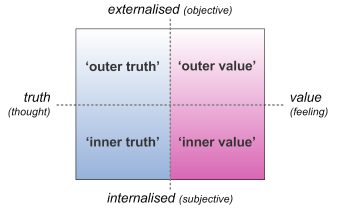

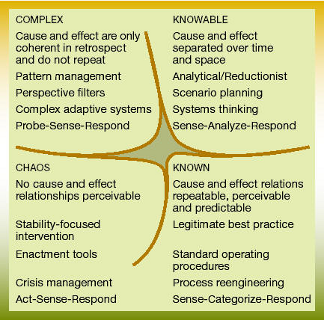
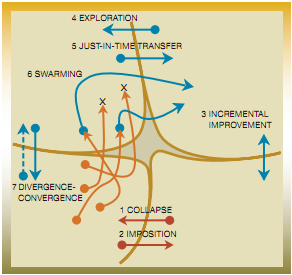
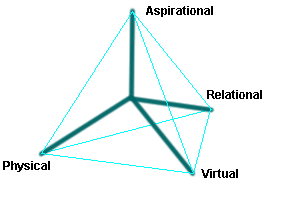
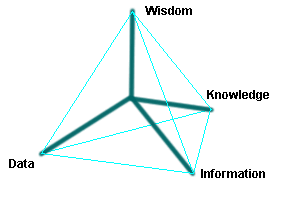
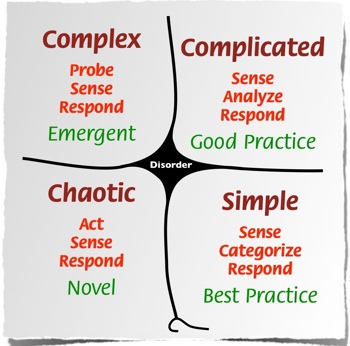
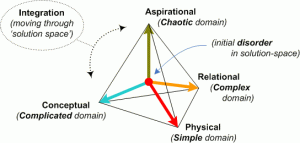
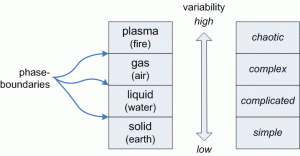
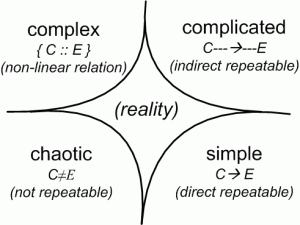

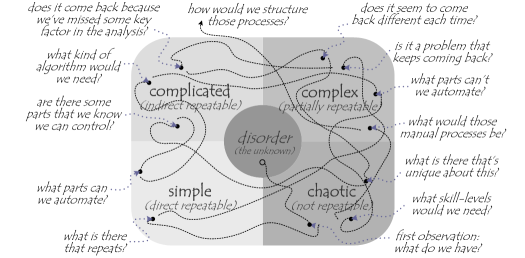
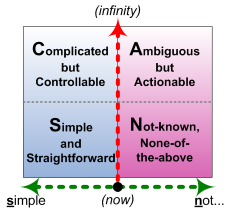
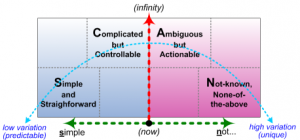
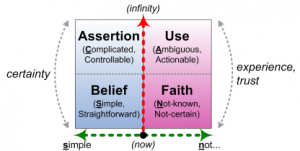

0 Comments on “Metaframeworks in practice, Part 4: Context-space mapping and SCAN”